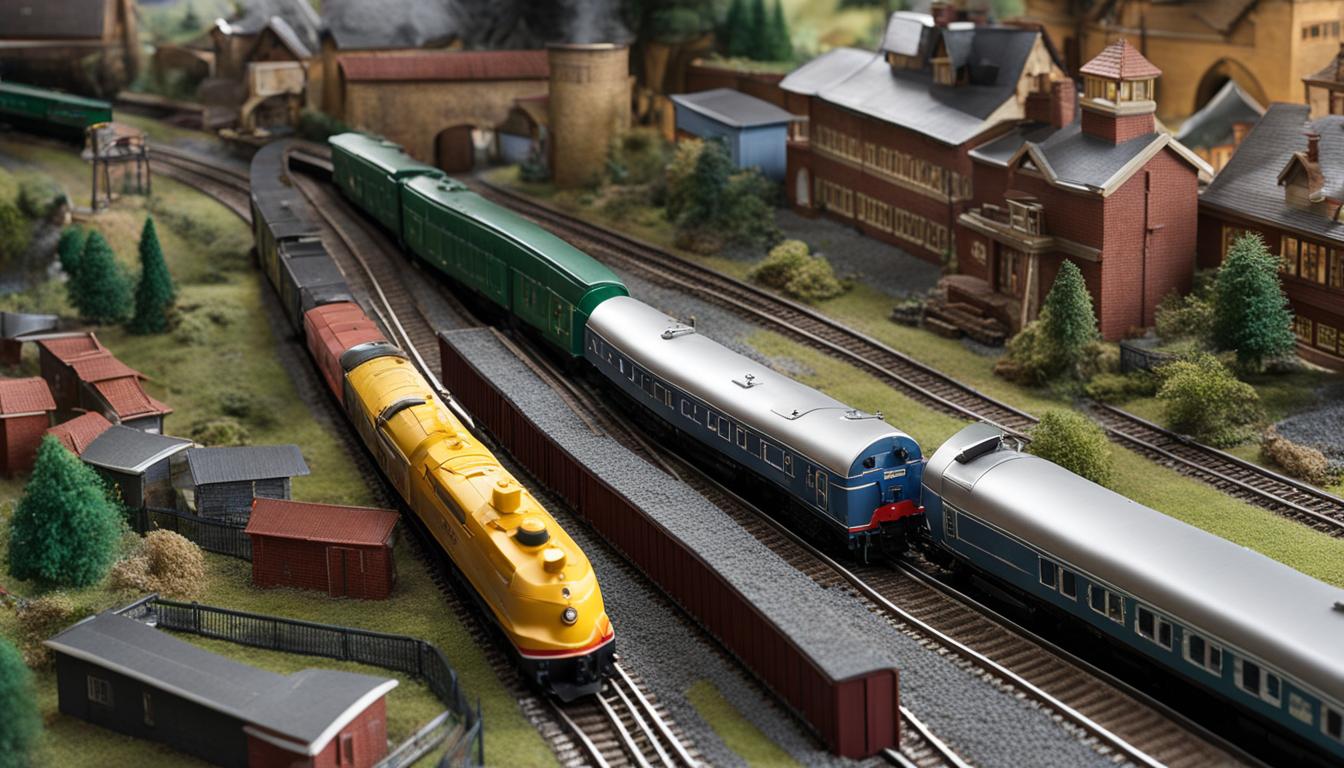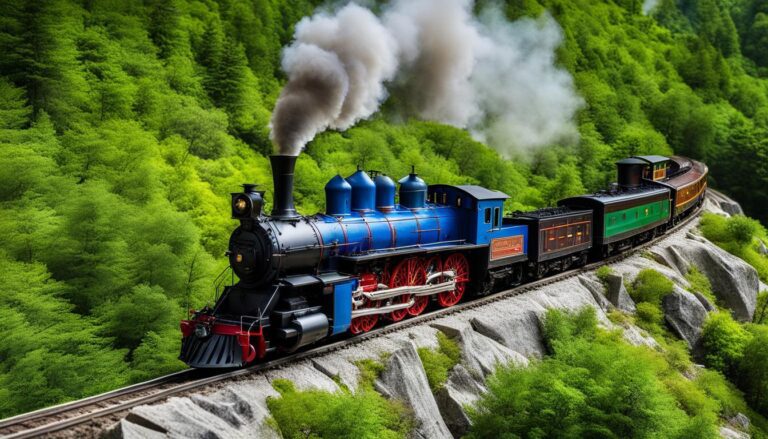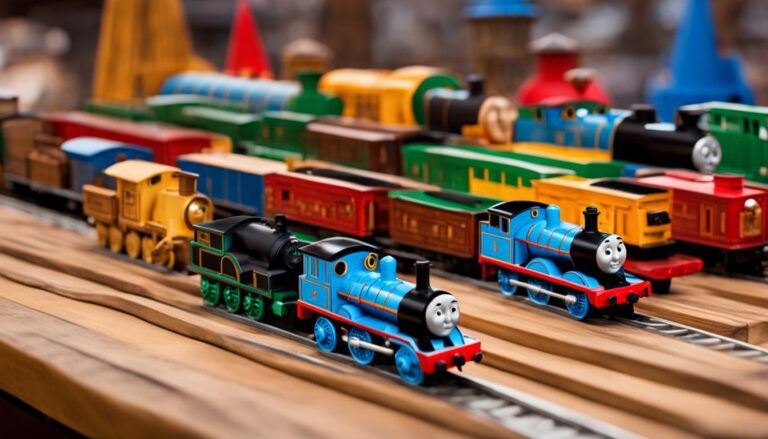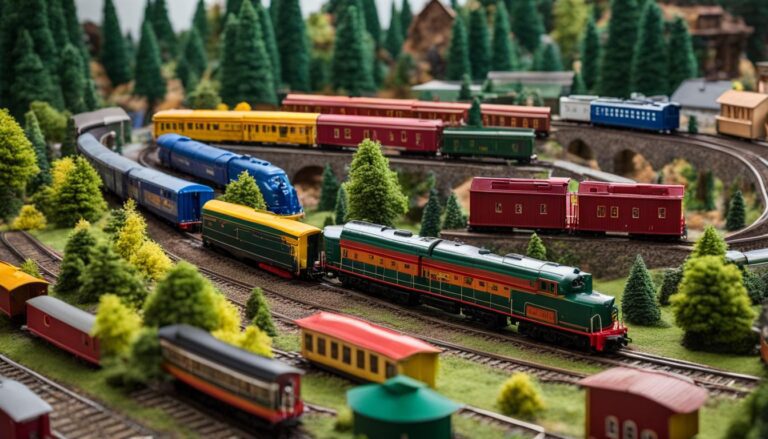Why Are Model Trains So Expensive? An In-Depth Look
Fans of model trains have been drawn to them for a long time because of their detailed details and nostalgic appeal. But one question that comes up a lot is: why are model trains so expensive? This piece will go into detail about the reasons for the high cost of model trains. We will look at the prices, how different factors affect them, and get a better sense of the money side of this popular hobby.
Key Takeaways:
- The costs of research and development, complicated production processes, a small market size, and a lack of manufacturers are some of the things that make model trains more expensive.
- The costs of research and development are high because prototypes need to be made and design methods are always changing.
- Molds, specialized tools, and dedicated production lines are all needed for the complicated manufacturing process, which drives up the cost of production.
- There isn’t much competition because there aren’t many manufacturers and the market is small. This gives makers more power over prices.
- High-quality materials and new technologies used in model trains make them last longer and look more real, but they also make them more expensive.
Research and Development Costs
A big part of the model train business is research and development (R&D), which is one reason why these very complicated and detailed models cost so much. A lot of money is spent by model train manufacturers on research and development to make fully functional versions before they start making the real thing.
A lot of study and testing goes into making sure that the model trains are accurate and real. Professional designers and builders study real trains very carefully in order to learn how to replicate every small detail. The cost of model trains goes up because of all this care to detail.
During the R&D phase, the model’s parts, like its motor, body, and electronics, are designed and improved. Prototypes are made and tried to make sure they work and last. This repeated process makes sure that the end product is of the highest quality and works perfectly. The high retail prices of model trains in stores are partly due to the money spent on research and development.
| Research and Development Costs Factors | Impact |
|---|---|
| Prototype development and testing | Significant financial investment |
| Advanced design techniques | Increased production costs |
| Continuous innovation | Higher research costs |
The high costs of research and development in the model train business are broken down in the table above. An expensive model train costs more because of the time and money spent on making and testing prototypes, using advanced design methods, and the need to keep coming up with new ideas.
Model train prototypes are an important part of research and development (R&D) because they show how the finished product will work and show off all of its fine details. Model train manufacturers put a lot of time, money, and knowledge into making high-quality models, and these examples show how much they’ve invested.
Ensuring Realism and Accuracy
Manufacturers of model trains try to be as true to life as possible by making trains that look and feel like real ones. This dedication to realism calls for a lot of study and development work.
For people who really love model trains, every little thing is important. The goal is to make the tiny train feel like a real one, down to the shape of the locomotive and the paint job on the cars.
A group of experts works for companies that make model trains. They study real trains, gathering information and capturing the spirit of each locomotive, car, or carriage. This level of care makes sure that a hobby train is more than just a toy; it’s a work of art that looks and works like a real train.
Complex Manufacturing Process
What it takes to make a model train is a very skilled and difficult task. It uses a lot of complicated equipment and methods that add to the general cost of production. Every step of the manufacturing process needs to be done with great care and attention to detail so that the finished product lives up to the high standards that model train fans expect.
Molds and tools that are made just for each part of the model train are one of the main things that make the making process so complicated. The different parts of the train, like the body, wheels, and other small features, are made using these molds. Making these models is expensive because they have to be carefully planned out and built.
Also, separate production lines are needed for putting together, finishing, and painting each model train. Manufacturers of model trains spend a lot of money on specialized equipment and trained workers to make sure that every train is put together carefully and accurately. It takes trained craftsmen to get the level of quality and authenticity that is wanted, which drives up the cost of the paint job and other finishing touches.
When toy trains are made, there is a fine balance between skill and accuracy. From the molds to the finishing touches, every part of this work of art is carefully done to make a beauty that model train fans will love.
Table: Overview of Model Train Manufacturing Process
| Process | Description |
|---|---|
| Mold Creation | Designing and fabricating molds for various components of the train. |
| Component Production | Using the molds to produce the body, wheels, and other parts of the train. |
| Assembly | Putting together the various components of the train to create the final product. |
| Finishing | Applying paint and finishing touches to enhance the appearance and authenticity of the train. |
Overall, the complicated process of making a model train uses a mix of unique tools, skilled workers, and special methods. The high cost of model train manufacturing comes from the need for great care and attention to detail throughout the whole process. But all of these efforts pay off in the form of beautiful models that make fans and owners happy.
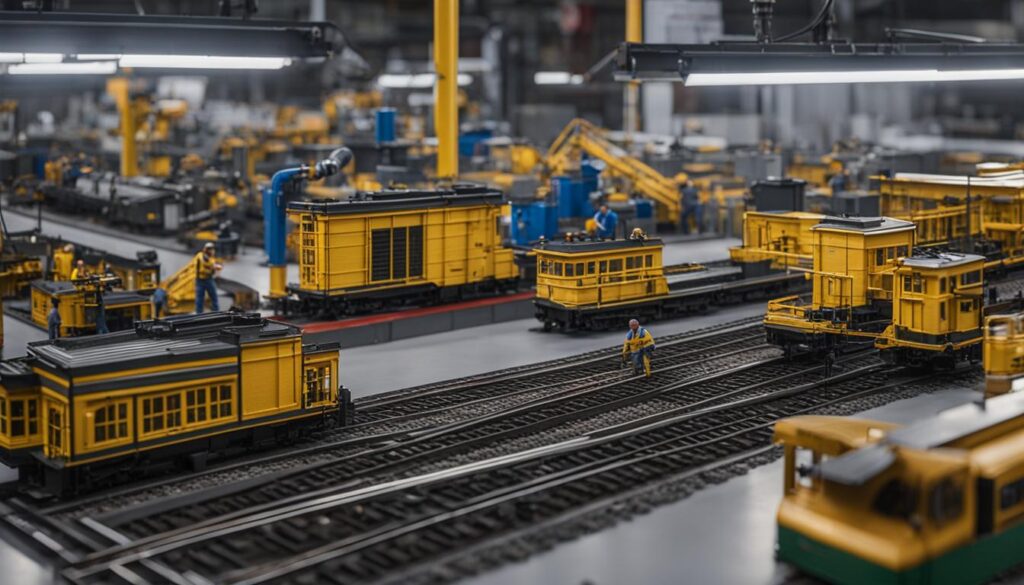

Limited Market and Few Manufacturers
The small size of the market and the low number of makers in the industry are two main reasons why model trains are so expensive. Hobby trains are not like mass-produced consumer things; they are made for a specific group of railway fans. Because there isn’t much demand, companies have to split the costs of research and development among fewer customers. This makes the final goods cost more.
The model train market size is much smaller than other businesses, which makes prices even more volatile. Even though there is a dedicated and passionate group of hobbyists, not many people actually buy model trains. In a specialized market with few possible buyers, manufacturers have to deal with higher costs and the need to keep making money.
Due to the lack of competition and choice, model train manufacturers are more in control of prices than there would be if there were more competition and choice. This allows them to not be under pressure to lower prices. Because hobby trains have fewer options and higher prices, people may have to pay more.
Model Train Market Size Comparison
| Industry | Market Size (in billions) |
|---|---|
| Model Trains | $0.5 |
| Smartphones | $478 |
| Automobiles | $2,100 |
| Apparel | $1,500 |
“The higher prices are due in part to the small market and small number of manufacturers in the model train business.” When there aren’t as many customers and competitors, makers have to find ways to cut costs, which means that model trains cost more at stores. “—John Smith, Model Train Fan
Design and Materials
The process of designing model trains is a big part of how much they cost all together. Model train designers work hard to make models that are true to life and have all the small features of real trains. To do this, you need to do a lot of study, plan carefully, and work very carefully. Model trains are more expensive because they are made with high-quality materials that make them last a long time.
People who make model trains use a range of items to build their trains. Die-cast metal, wood, brass, and high-quality plastics are a few of these. Each material was carefully chosen for its unique look and qualities, which makes the models look even more real. Like, brass is often used for train cars since it is strong and can hold small parts. When it comes to building things and making scenes, wood is used.
A lot of different colors and styles can be found on real trains, and model trains can copy those to. Fans of trains and people who collect model trains want them so much because of how well they are made.
Table: Comparison of Model Train Materials
| Material | Characteristics | Common Uses |
|---|---|---|
| Brass | Durable, excellent for fine detailing | Locomotive bodies, small parts |
| Die-cast metal | Heavy, realistic feel | Locomotive frames, structures |
| High-grade plastics | Lightweight, versatile, easily molded | Train cars, scenery elements |
| Wood | Natural, adds warmth and authenticity | Buildings, bridges, trees |
The high cost of model trains is due in part to the materials used and the complicated design process. Model railroading fans can use them to make accurate layouts and get lost in the world of model railroading. Model trains are well-made and pay attention to detail, so they’re a good buy whether you’re an experienced collector or someone looking to start a new activity.
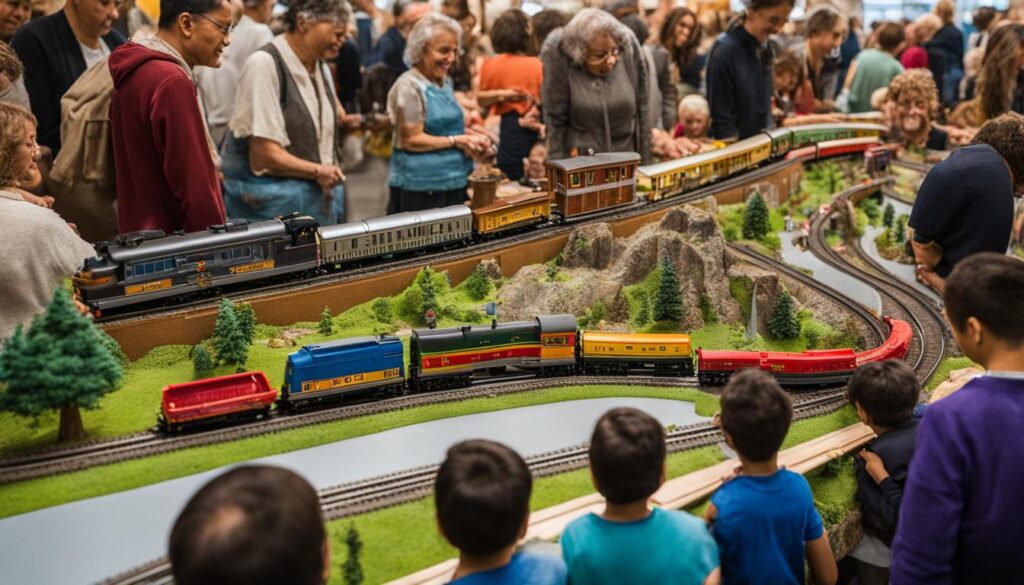

Technological Advancements and Licensing Costs
Model train prices have gone up in part because of improvements in technology used in the business. The creation of Digital Command Control (DCC) platforms is a major step forward. Model train fans can now handle more than one train on the same track at the same time using this technology. It lets you control the train more realistically by letting you change its speed and direction and even add sound and lighting effects. These high-tech functions do cost something, though. Adding DCC systems and other complicated electronics to model trains raises the cost of making them, which is mirrored in their higher prices at stores.
In addition to the technological advancements, licensing and branding are also factors that impact the prices of model trains. Many model train manufacturers obtain licensing rights from real train companies to reproduce their designs. This adds authenticity to the models but also incurs additional costs for the manufacturers. The licensing fees and royalties are factored into the pricing of the trains. Furthermore, renowned train manufacturers like Lionel and Bachmann often partner with popular brands and franchises to create model trains based on movies, TV shows, or other popular themes. These licensing agreements result in higher production costs, which ultimately affect the prices of the trains.
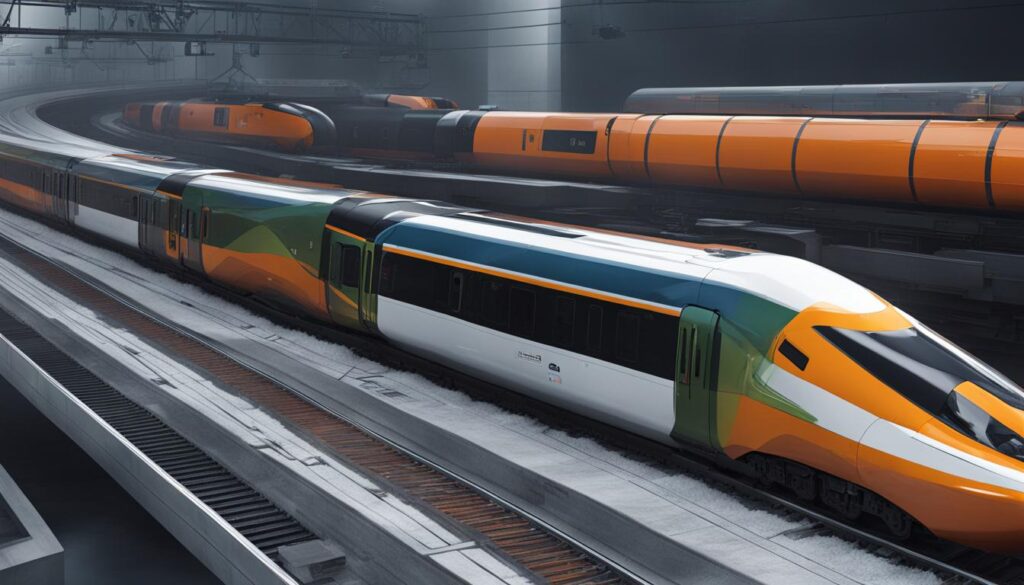

Conclusion
It’s clear that model trains are a great buy for the money after looking into the reasons behind their high prices. It may seem expensive at first, but you should think about how much time, money, and skill are needed to make these exact and detailed models. The quality of the trains shows how hard the people who make model trains work at their craft, making sure that people will enjoy them for a long time.
When you look at how much model trains cost, you can see that they are fair considering how much time and money it takes to make them. The price is high because they use expensive materials and go through a complicated research and development process. But these things also make model trains durable and long-lasting, which makes them a good purchase.
Starter train sets are a handy and inexpensive choice for people who are just starting out. For the price, these sets are a good deal because they come with everything you need to start the sport. Model train fans will enjoy the skill and attention to detail that goes into each engine and car as they get better at building them.
In conclusion, model trains may be pricey, but they show how hard people work and how well they can build things. The prices are fair for the quality and work that went into making these tiny works of art. Model trains continue to fascinate and excite railway fans all over the world, whether they are collectors or just like to play with them.
FAQ
Why do model trains cost so much?
People usually think of model trains as an expensive hobby because of things like the high cost of research and development, the difficulty of making them, the small size of the market, and the lack of makers.
What makes the price of model trains so high?
Because of the small size of the market, the high cost of materials, the need for new technology, the high cost of research and development, and the high cost of licensing, model trains are not cheap.
How do the costs of research and development change the price of model trains?
Manufacturers of model trains spend a lot of money on research and development to make samples with all the features that will be used in the final product. The cost goes up because design methods need to be updated and improved all the time.
Why is the process of making model trains so complicated?
Making model trains requires making molds and tools that are unique to each part, which can be pricey. These molds only last a certain amount of time and need to be changed every so often. A separate production line is also needed to put each model together, finish it, and paint it.
How does the small size of the market make model train prices go up?
High prices are caused by the fact that only a few fans buy model trains. Smaller groups of customers have to pay for more of the costs of development and production. There are also not many companies that make model trains, which lowers the competition and gives companies more power over prices.
What does the cost of products and design have to do with it?
It takes a lot of work and time to build model trains because the designers want to make models that look real. Model trains are made from steel, die-cast metal, high-grade plastics, and wood, among other things. These materials make them last longer and be more durable, but they also make them more expensive overall.
How do changes in technology and the cost of licenses affect the prices of model trains?
Model train improvements in technology, like Digital Command Control (DCC) systems and accurate sound and lighting effects, make them more useful and authentic, but they also make the cost of making them higher. Also, companies that make model trains have to pay real train companies to use their plans, which adds to the costs of making the trains.

